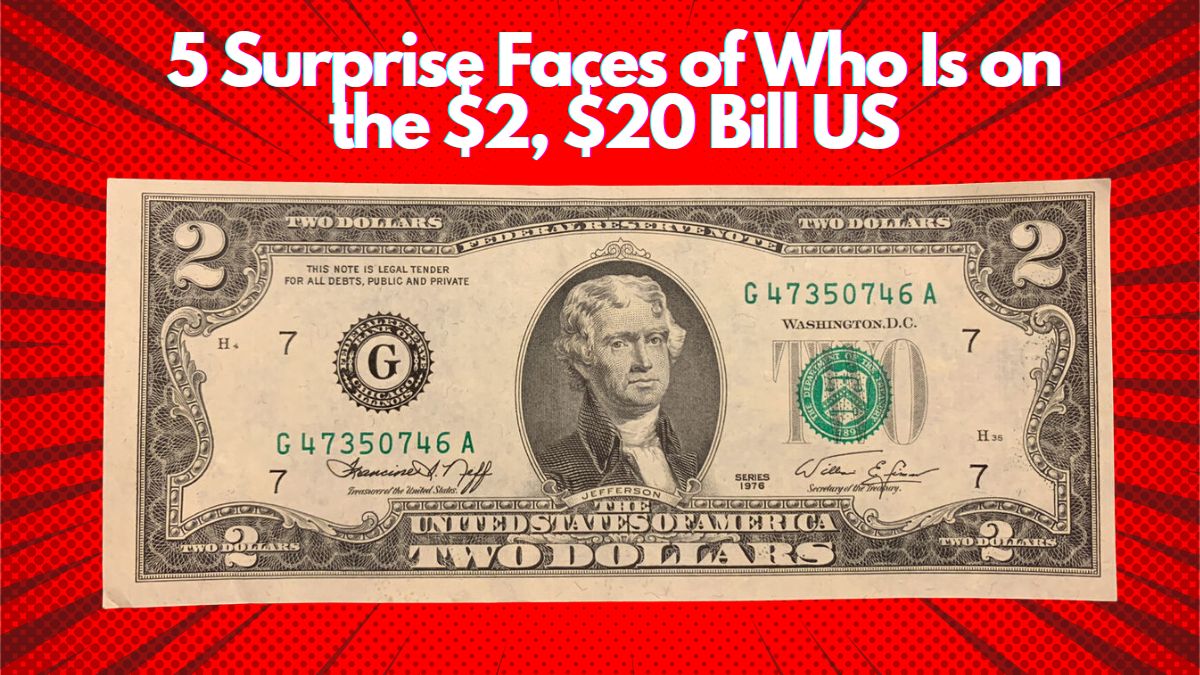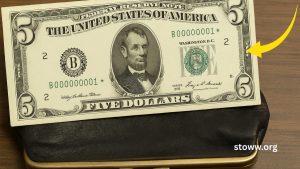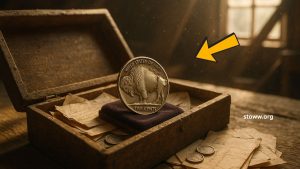When it comes to U.S. currency, the faces that grace the bills often spark curiosity. Most people are familiar with the prominent leaders who appear on the $1, $5, $10, $50, and $100 bills, but the $2 and $20 bills feature a couple of unexpected individuals.
In this article, we will explore the fascinating history behind these bills, uncovering the figures who might surprise you.
1. Thomas Jefferson on the $2 Bill
The $2 bill is perhaps the most underrated piece of U.S. currency, mainly because it is less frequently circulated compared to other denominations. However, this bill features one of the most influential figures in American history – Thomas Jefferson, the third president of the United States and the primary author of the Declaration of Independence.
Thomas Jefferson: A Founding Father
- Notable Contributions: As the author of the Declaration of Independence, Jefferson played a crucial role in shaping the principles of American democracy. His efforts in securing Louisiana Territory also expanded the nation’s borders significantly.
- Why Jefferson?: His inclusion on the $2 bill honors his role as a founding father, and the bill’s infrequent circulation only adds to the unique allure of this currency.
Interesting Facts About the $2 Bill:
- The $2 bill was first issued in 1862 and was redesigned in 1976 to commemorate the 200th anniversary of American independence.
- While the bill is legal tender, it is not commonly used, leading to its “collector’s item” status.
2. Andrew Jackson on the $20 Bill
The $20 bill is widely used, but the figure it features is often a source of debate. The $20 bill prominently displays Andrew Jackson, the seventh President of the United States. Known for his controversial policies and populist approach to leadership, Jackson’s presence on the bill has raised questions in recent years.
Andrew Jackson: The Populist President
- Legacy: As the president who founded the Democratic Party, Jackson’s populist stance and support for the “common man” earned him widespread admiration. However, his policies, especially regarding Native American removal and slavery, have sparked significant criticism in modern discussions.
- Why Jackson?: Jackson was chosen for his role in shaping the country’s political landscape and his two terms as president. His portrait became a staple on the $20 bill after the 1928 redesign.
Interesting Facts About the $20 Bill:
- There has been much debate about replacing Jackson with Harriet Tubman, a famed abolitionist. While plans for a redesign were proposed, Jackson remains on the bill as of now.
3. The 1976 $2 Bill: Celebrating U.S. History
The 1976 $2 bill is a unique collectible. It not only honors Thomas Jefferson, but it also commemorates the Bicentennial of the United States. The back of the bill depicts John Trumbull’s painting, “The Signing of the Declaration of Independence,” which further highlights the historical significance of the $2 bill.
4. The 1977 $20 Bill: Featuring Jackson’s Legacy
The 1977 version of the $20 bill reintroduced Andrew Jackson’s portrait, but the 20-dollar note has undergone multiple redesigns since then. Even after such redesigns, Jackson’s figure continues to dominate the currency.
Key Details of the $2 and $20 Bills
| Denomination | Portrait | Reverse Design | Notable Features |
|---|---|---|---|
| $2 Bill | Thomas Jefferson | Declaration of Independence | – Celebrates American Independence – Rarely circulated but legal tender – Historical significance |
| $20 Bill | Andrew Jackson | The White House | – Features Jackson, a controversial figure – Future redesign to include Harriet Tubman being debated |
FAQs
Q1: Why is Thomas Jefferson featured on the $2 bill?
A1: Thomas Jefferson is featured on the $2 bill due to his crucial role in the American Revolution and his influence on the formation of the United States. As the principal author of the Declaration of Independence, he is one of the key figures in shaping the nation. This bill also commemorates the bicentennial of the country.
Q2: Is the $2 bill still in circulation?
A2: Yes, the $2 bill is still in circulation and is legal tender. However, it is rarely used in everyday transactions and is more often collected or kept as a novelty due to its scarcity in circulation. Despite its rarity, it remains an official part of U.S. currency.
Q4: Will Harriet Tubman replace Andrew Jackson on the $20 bill?
A4: There has been significant debate and proposals to replace Andrew Jackson with Harriet Tubman, a renowned abolitionist and freedom fighter. Although the redesign was initially planned, Jackson remains on the bill as of now. The redesign has been delayed, and Tubman’s placement has not yet occurred.
Conclusion
The faces that appear on U.S. currency, particularly the $2 and $20 bills, represent key historical figures whose contributions shaped the nation’s development. Whether it’s Thomas Jefferson on the $2 bill, a symbol of American ideals and independence, or Andrew Jackson on the $20 bill, a president whose legacy continues to spark conversation, these bills offer a tangible connection to American history.
While both are still legal tender, they also hold unique collector’s value, particularly for those interested in the figures they represent and the history they embody.



